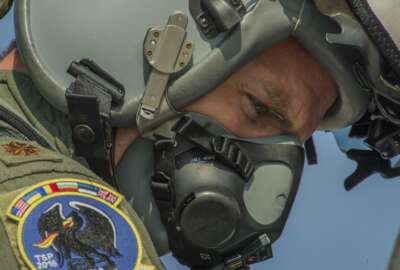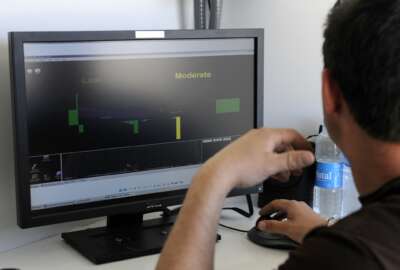
With new CDO office, Air Force aims to stand up service-wide shared data environment
In its 2019 budget, the Air Force plans to fully stand up its new Chief Data Office, with funds to establish a new shared data environment and a trusted database of...
The Air Force’s new chief data office is starting out small, both in terms of personnel and in terms of budget. It’s hard to say the same about its ambitions though.
The service — only the second in DoD to establish a formal CDO role — says it hopes to use the organization to achieve what might be called holy grails in the context of a Pentagon that’s famous for its data silos: a shared data environment, a trusted registry of authoritative data sources from across the Air Force, and new analytic capabilities to turn those data warehouses into actionable information across the service’s mission areas.
“All of our mission areas rely on data,” said Maj. Gen. Kim Crider, the Air Force’s CDO. “It’s my job to help our enterprise answer questions, solve problems and find opportunities to leverage our data to deliver on the Secretary of the Air Force and Air Force Chief of Staff priorities.”
The Air Force mentioned the standup of the new data office, which officially occurred last summer, as a key priority in its 2019 budget rollout. Current plans call for a full-time government staff of about a dozen people, plus $14 million in new spending to pay for the standup of the new data and analytics environment and data scientists, architects and engineers working under contract.
The Air Force is only the second military service to create a permanent CDO operation, and for now, Crider and her team plan to focus on early proofs of concept. In one use case, they’re crunching the service’s personnel data in an effort to direct its limited manpower to where its most critical shortages are.
But Air Force Chief of Staff Gen. David Goldfein, who first directed the standup of the chief data office in Sept. 2017, said the Air Force has ambitions that extend well beyond personnel management and into almost every aspect of how it will conduct future warfare.
“We already collect volumes of data from every domain, so the next question is how do we make the information both timely and useful so we gain better understanding of the operational environment than our adversaries? It’s not enough to have more data than our adversaries, it’s how we understand the information and use it at the speed of relevance that matters,” Goldfein said Feb. 23 at the Air Force Association’s annual Air Warfare Symposium in Orlando, Florida. “Our manual time consuming process today will only inhibit that speed.”
But Goldfein emphasized that the service’s thinking about harnessing the power of its data has evolved over the past several years. These days, the focus is not primarily on performing analytics on large, existing data sets. Rather, it’s on fusing, in real-time, the information the Air Force collects at every moment of every day.
“In future conflict, we are going to have to leverage artificial intelligence, human-machine teaming, quantum computing and other technological advancement so that we have humans doing what only humans can do, and let computers and learning software rapidly accelerate the speed and the quality of our analysis,” he said. “Does it connect? Good. Does it share? Better. Does it learn? Bingo. I don’t see this as managing large cumbersome volumes of data, or trying to connect every platform, sensor, or weapon in the inventory. We’ve got to be far more nuanced and advanced than that. It’s time for us to embrace and advance competing at the edge. Each of these platforms, sensors, and weapons are individual computers, advancing and going at the rate of Moore’s Law. We’ve got to think beyond an already old idea of big data, and think more about timely access of the right data.”
Copyright © 2025 Federal News Network. All rights reserved. This website is not intended for users located within the European Economic Area.
Jared Serbu is deputy editor of Federal News Network and reports on the Defense Department’s contracting, legislative, workforce and IT issues.
Follow @jserbuWFED





